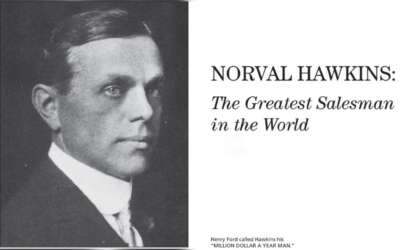How transparency works in the buying brain
I was working with a group of SaaS founders this week, discussing the fundamentals of how transparency works in the buying brain.
The idea that, when a website is acting as the salesperson, and we’re buying something of medium-to-high consideration that we haven’t bought before:
-
- We all read reviews
- 85% of us skip the 5-star reviews, and read the negative reviews first, and,
- An average review score on a product of 4.2-4.5 is optimal for purchase conversion.
We all know, subconsciously, that perfection does not exist. Our brains must know the risk, the downside, what is being given up to get all the goodness, before a decision gets triggered.
And, as it turns out, the buying brain works exactly the same when a human being is the salesperson – when we’re buying B2B. We must be able to predict. When a salesperson is presenting a solution as perfect, it drives us as buyers to do the homework, and sometimes we never come back.
Presenting your solution as “perfect” and hiding its flaws slows decision making/sales cycles, lowers win rates, and makes it easier for your competitors to position against you.
On the other hand, leading with imperfections, what a competitor may do better, a feature we don’t have, actually builds trust, speeds decision making (i.e., shrinks cycle length), increases win rates – qualifying IN opportunities better & faster we should be working, but also qualifies OUT deals we are likely to lose anyway, just faster.
Then came the question…
“So, should we lead only with the imperfections we think the prospect won’t care about?”
No! Two massive reasons why…
First, just as a human being, if what you’re selling can’t stand the truth, you should go sell something else. At it’s core, embracing transparency goes back to the idea that, when a website is acting as a salesperson, the optimal review score is a 4.2-4.5. As a result, your approach should not be in the context of, “this is why we suck”, it’s as Tyra Banks coined the term, presenting your “flawsome”…your flaws, while you are still awesome.
If your solution is a 2 or a 3, and the truth won’t sell it, don’t sell it.
But second, and soooo important, due to the proliferation of reviews & feedback on everything we do, buy and experience, you can no longer hide flaws and expect to get away with it anyway. You MUST embrace them.
In other words, imagine you’re a start-up with no clients yet. Would it be better to lead with that, or hide it until they ask to talk to references 4-months later?
“We are just getting started. I’m so passionate about this solution we’ve created, I’m taking the risk to build it and take it to market. However, that also means that we have no clients using it just yet. If that’s going to stop you from being able to move forward, can wediscuss that now?”
Because, if it is going to hold them back, do you want to keep investing time in them, hoping they (a) don’t ask, or (b) you’ve somehow talked your way into them wanting to be first with you, burning 4-months of cash when you’re wrong?
See the world through the prospect’s eyes. If you were in their shoes, what about your solution would concern you? Lead with it – and watch the magic happen;
-
- Prospects who buy (becoming customers) or opt out quickly so you can invest your most valuable asset, your time, in prospects who more likely will.
- Customers who stay, where the relationship is built on a bed of trust, and expectations are set accurately and consistently met
- Customers who buy more
- Customers who advocate on your behalf, creating more customers.
Embrace transparency.
Transparency is having your prospect take a seat with you – not across with you.
It’s about sharing the things you’d talk about in an internal meeting.
Transparency sells better than perfection. Lead with it. Win faster. Win more often. And if you’re going to lose, lose fast!






0 Comments